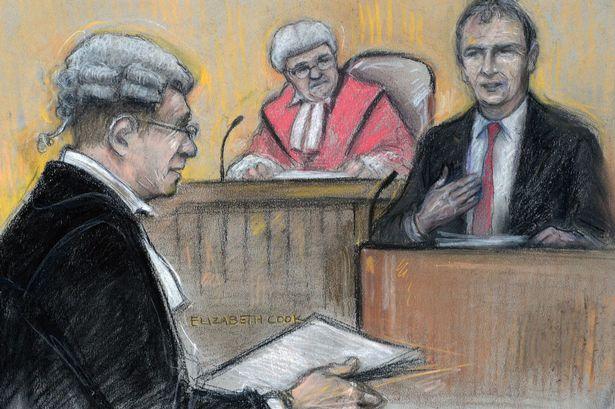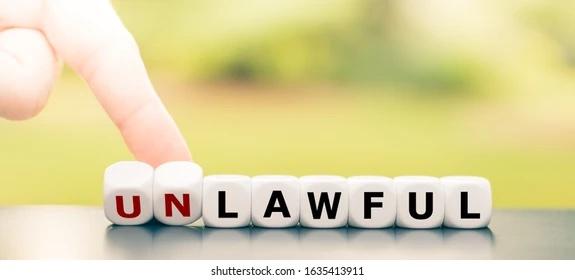Legal Interpreting students in Australia and New Zealand (and I'm sure in other common law jurisdictions) often come across the expression "I put it to you that..." when they go to court to observe the court in action.
What does this expression mean?
How should one interpret this English expression into their LOTE (language other than English)?

This is a very intriguing expression😅, and you don't really come across it anywhere else outside of the legal context. A similar expression often used by police in conducing police interviews is that the police officer would say to a suspect "I suggest to you that...".
Lawyers (prosecutors and defence solicitors/barristers alike) when cross-examining a witness will often say to the witness "I put it to you that...". The ensuing "..." would usually be a version of the incident, a proposition, or an allegation of some sort, and the specific proposition being put by the lawyer to the witness would differ from that which was being advanced by the witness.
The lawyer may say to the witness something like:
"I put it to you that you only saw someone whose height was similar to my client, but you didn't actually see that person's face, therefore it was not possible for you to say with any degree of certainty that the person you saw was my client. What do you say to that?"
To work out how to interpret this expression into LOTE, one needs to firstly understand what the expression means and why lawyers would use this expression in cross-examinations. I would say that even seasoned court interpreters may not know the origin of this expression. Knowing the origin of this expression will help you to understand what it means, and to help you work out how to interpret it into your LOTE.
It's story time! 😜😜
What is the origin of "I put it to you that..."
The origin of this formulaic expression I believe can be traced back to the English House of Lords judgment in the matter of Browne v. Dunn (1893) 6 R. 67, H.L.. which then gave rise to what is known as the Browne and Dunn rule for cross-examination. The entry in Wikipedia describes it as "an anti-ambush rule". It is an important rule for procedural fairness.
What is the Browne and Dunn rule? It's best explained by giving an example.
An eyewitness Mary, gives evidence in court that she saw a robber holding a knife, and she alleges that the robber was Peter, the accused person, now sitting in the dock.
Peter's barrister does not believe Mary saw the robber's face clearly on the day of the incident, so Mary could not have identified Peter as the robber, because the barrister somehow found out that Mary wore glasses, and yet Mary wasn't wearing glasses on the day the robbery occurred.
So at the closing address to the jury, the barrister plans to invite the jury to reject Mary's evidence. The barrister wants to say to the jury that Mary chose not to wear her glasses that day, probably for cosmetic reasons, and so her identification of Peter as the robber cannot be trusted as reliable.
But what the barrister doesn't know is that Mary actually had undergone a vision correction surgery 6 months before the incident, that's why even though she used to wear glasses, she no longer needed them! So on the day of the incident, Mary and her 20/20 vision in fact had a perfect look at the robber, she was certain it was Peter.
Now, if the barrister wants to invite the jury to reject Mary's evidence because the barrister claims that Mary could not see properly without her glasses, then barrister must firstly put that proposition to Mary while Mary was on the witness stand, something like this:
"I put it to you that you could not have seen the face of the robber clearly because you weren't wearing your glasses. What do you say to that?"
Once this proposition (or suggestion) is put to Mary, Mary will then have an opportunity to respond to the proposition. Mary could seize this opportunity to explain to the jury about her vision correction surgery, and consequently she had no problem seeing the face of the robber, and that her identification of Peter as the robber was therefore credible.
But if the barrister had never put this proposition to Mary while she was on the witness stand, and the barrister had waited until Mary finished giving evidence, until Mary was no longer on the witness stand, before suddenly springing this proposition on the jury, well that would be unfair to Mary. Because by then Mary was no longer on the witness stand, she would have never been given an opportunity to defend herself, and so in that sense Mary and the side for which she was giving evidence would have been "ambushed" by the barrister.
So, the Browne and Dunn rule is a safeguard to procedural fairness, to be fair to the witness. An allegation should firstly be "put" to the witness to allow him/her an opportunity to accept or deny the allegation. Without first giving the witness an opportunity during cross-examination to provide a response to a particular point (i.e. without putting a particular suggestion to the witness), a lawyer will not be allowed to later on ask the judge or the jury to consider that particular point or proposition.
Likewise, towards the latter part of the police interview, the police will present what the police believe really happened to the suspect, often in the form of "I suggest to you that...", to allow the suspect to comment on such a suggestion. The suspect may admit to the suggestion, or they may deny it (and perhaps in the course of denying it the suspect may end up giving more conflicting and inconsistent details!). Whatever the suspect choses to do (admit, deny, remain silent), at the very least s/he has been offered an opportunity to respond to the suggestion.
The Browne and Dunn rule is about being fair: being fair to the suspect, the witness and the accused person. 👍👍💥💥
Having read the example of Mary the witness above, if you now read the excerpt below taken from the judgment of Browne v Dunn (1893), I'm sure it'll make a lot of sense, and you also get to see the origin of the expression "I put it to you that...":
Justice Herschell wrote in the judgement:
"it seems ... absolutely essential to the proper conduct of a cause, where it is intended to suggest that a witness is not speaking the truth on a particular point, to direct his attention to the fact by some questions put in cross-examination showing that that imputation is intended to be made, and not to take his evidence and pass it by as a matter altogether unchallenged, and then, when it is impossible for him to explain, as perhaps he might have been able to do if such questions had been put to him, the circumstances which it is suggested indicate that the story he tells ought not to be believed, to argue that he is a witness unworthy of credit. My Lords, I have always understood that if you intend to impeach a witness you are bound, whilst he is in the box, to give him an opportunity of making any explanation which is open to him; and, as it seems to me, that is not only a rule of professional practice in the conduct of a case; but is essential to fair play and fair dealing with witnesses."
(The Browne v Dunn rule is an important common law rule, so much so that someone actually spent the time and expense to set up a dedicated website http://brownevdunn.com to host the full judgement of Browne v Dunn for the benefit of lawyers and law students!)
What does "I put it to you that..." mean?
So "I put it to you that..." and "I suggest to you that..." essentially are used to present a proposition to a witness (or to a suspect) to allow them an opportunity to respond to the proposition.
Can lawyers put any and all propositions to a witness? My understanding is No, there are constraints to what a lawyer can put to the witness. A lawyer should have some good faith basis for putting forth a proposition. So things like "I put it to you that your pet bird ate your homework" or some other absurd proposition that lacks any basis whatsoever should not be put to a witness.
In addition to the expression "I put it to you that...", we often hear lawyers challenging an account advanced by a witness by prefacing their challenge to the witness with a similar expression: "I think what really happened was that...", to indicate that (a) the lawyer disagrees with the witness' account, and that (b) the lawyer presents an alternative proposition to the witness for his/her response.
I hope this post helps legal interpreting students to understand the origin and meaning of this formulaic expression, and the closer examination of this expression above offers legal interpreting students some ideas about rendering it into your LOTE.
~~~2024.06.14 update~~~
A good example of a Browne v Dunn error in the news is the trial of Greg Lynn. Click here, here, and here to read about this trial.
Scroll down to the subheading “Prosecutor breached “basic rule of fairness”: Judge" in the article. There, you'll see that the judge in giving directions to the jury basically chastised the prosecutor for having made Browne v Dunn errors. The judge said that when the accused Mr Greg Lynn took the stand, the prosecutor had breached the “basic rule of fairness” by not putting to Mr Lynn, during cross examination, the suggestion that the former pilot covered up the campers’ deaths because he believed he had murdered them. “Had [the prosecutor] asked Mr Lynn these questions [while Mr Lynn was on the witness stand], put these propositions to him, Mr Lynn may well have been able to respond in a powerful and convincing way,” the judge said.
“Therefore you must take into account that Mr Lynn was not given the opportunity by the prosecutor to respond to the imputation ... because of this breach of the basic rules of fairness, you may more readily reject the prosecution arguments and the inferences the prosecution wants you to draw.”
© 2022 Kenny Wang, PhD
Certified Specialist Legal Interpreter (English <> Mandarin)
Lecturer in Interpreting and Translation at Western Sydney University
Click here to read this post in Chinese: 律师交叉诘问证人时说 "I put it to you that..." 中文怎么翻?





